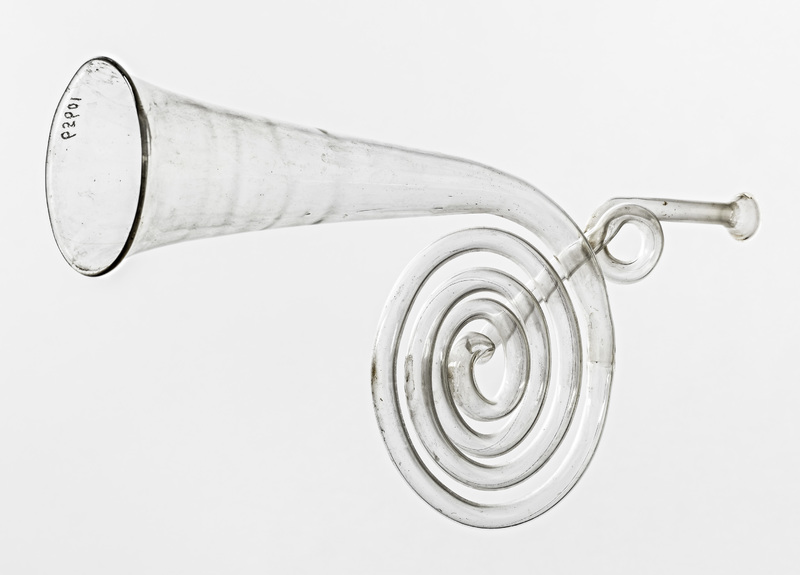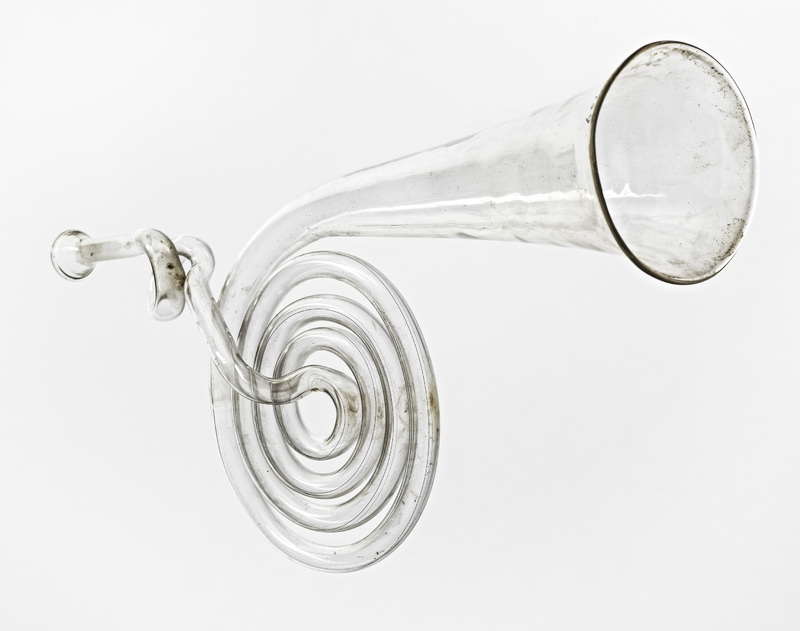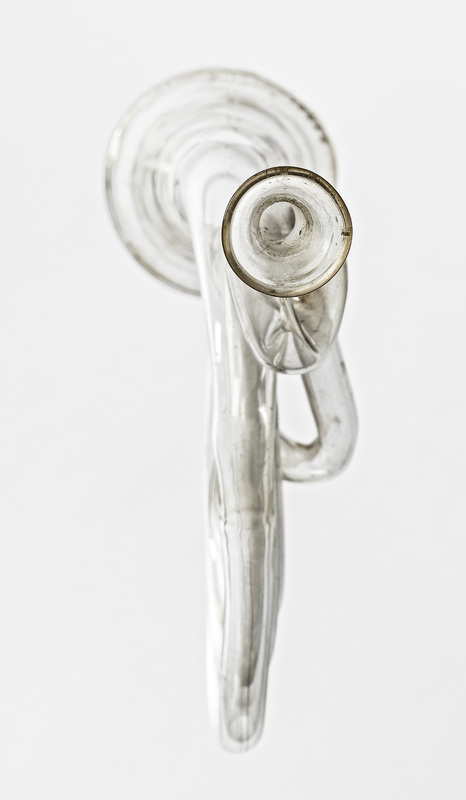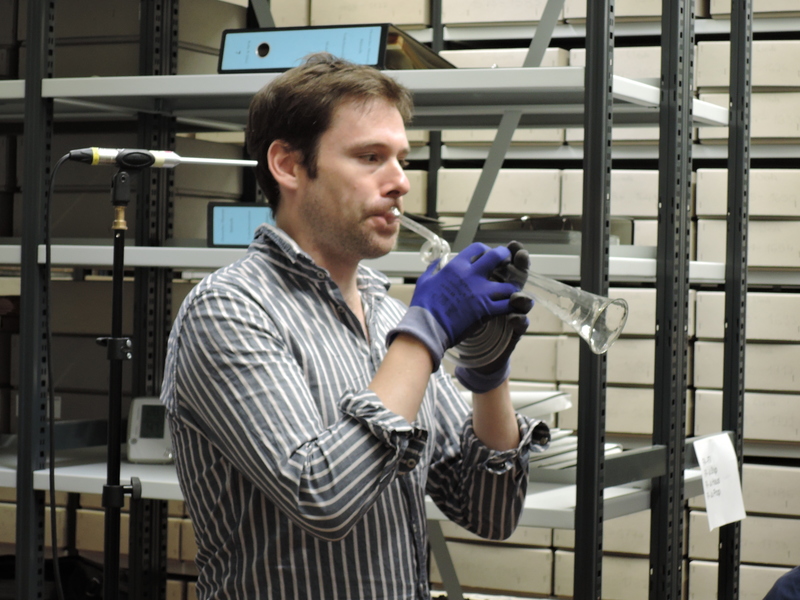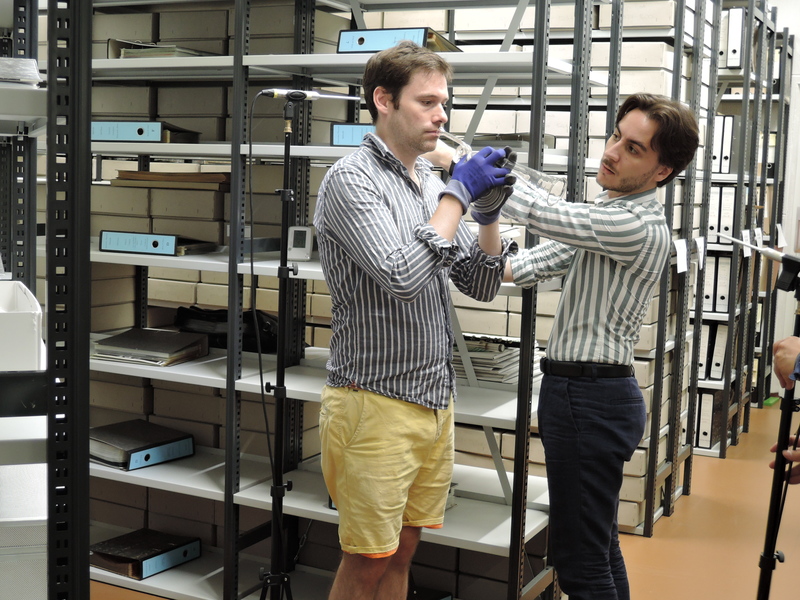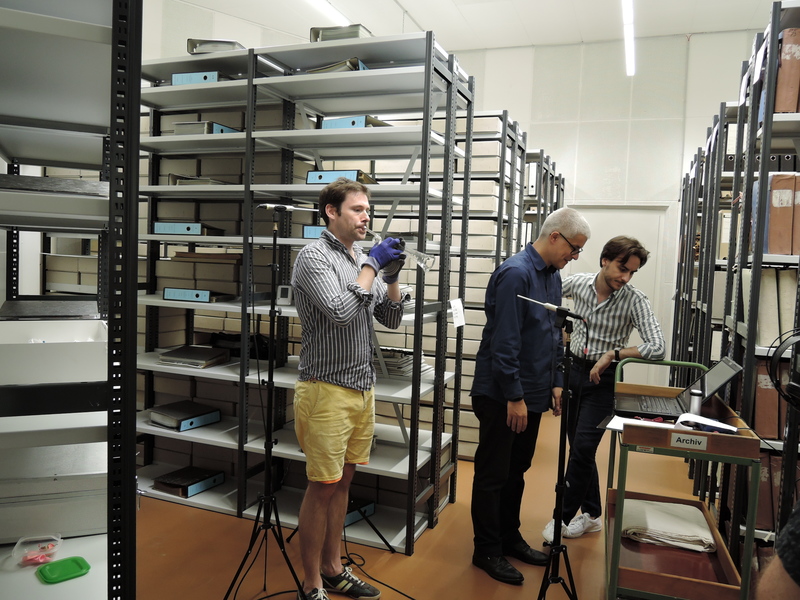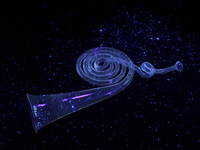Blaring glass
Natural trumpet in B with four coils, early 20th century, Inv. No. 65601
Little is known about the origin of this glass trumpet. It was probably purchased as an acoustic test object. Like all trumpets, it consists of a predominantly cylindrical tube, a funnel-shaped bell, and a flat cup mouthpiece. It is made entirely of glass with the parts joined at the first curve.
The trumpet was recorded on July 30, 2018, in the former recording studio of the Deutsches Museum. The reverberation time was about 250 ms. Trumpeter Matthew Sadler played single tones at three dynamic levels, both portato and staccato, followed by a demonstration of various playing techniques and several signals and fanfares. Here, the volume of the delicate instrument was surprisingly loud – a difficult feat due to the small mouthpiece.
The instrument is shorter than a typical natural trumpet and sounds an octave higher than its relatives. After being played for a longer period of time, especially at an almost constant forte, the glass began to stretch slightly.
Musical examples
Playing techniques
Musical pieces
Click here to play the glass trumpet.
For a material analysis of the trumpet, click here.
Citation: Rebecca Wolf, ‘Glass sounds or the fascination of transparency’, in: Materiality of Musical Instruments. A Virtual Exhibition.

